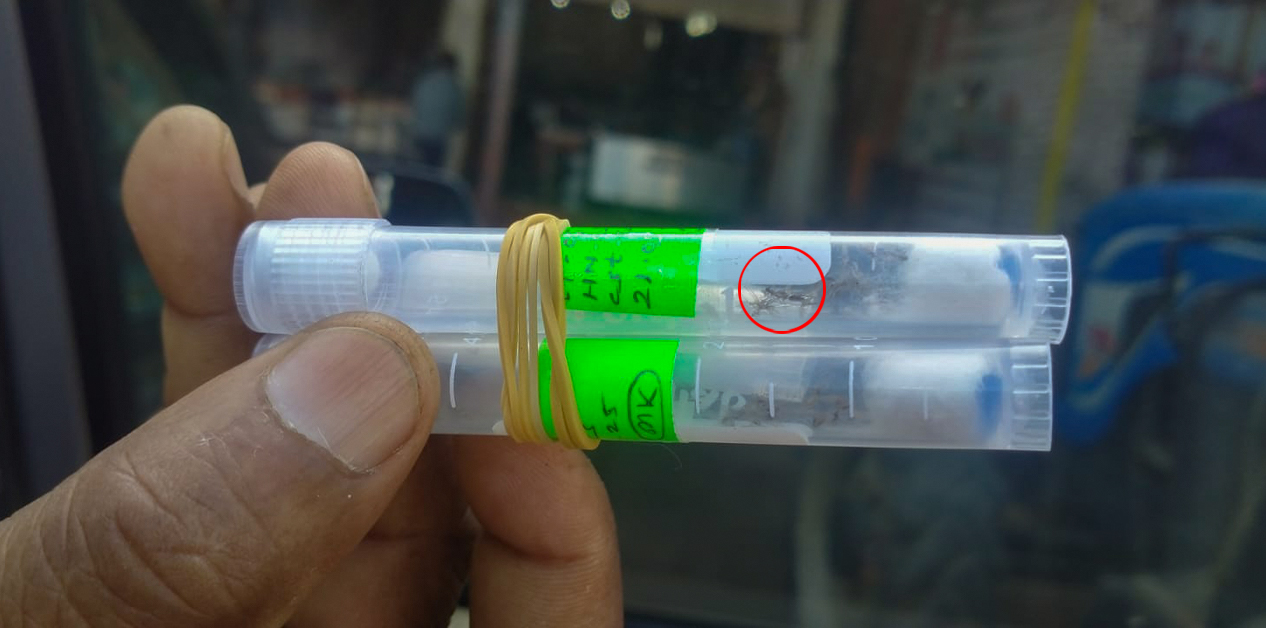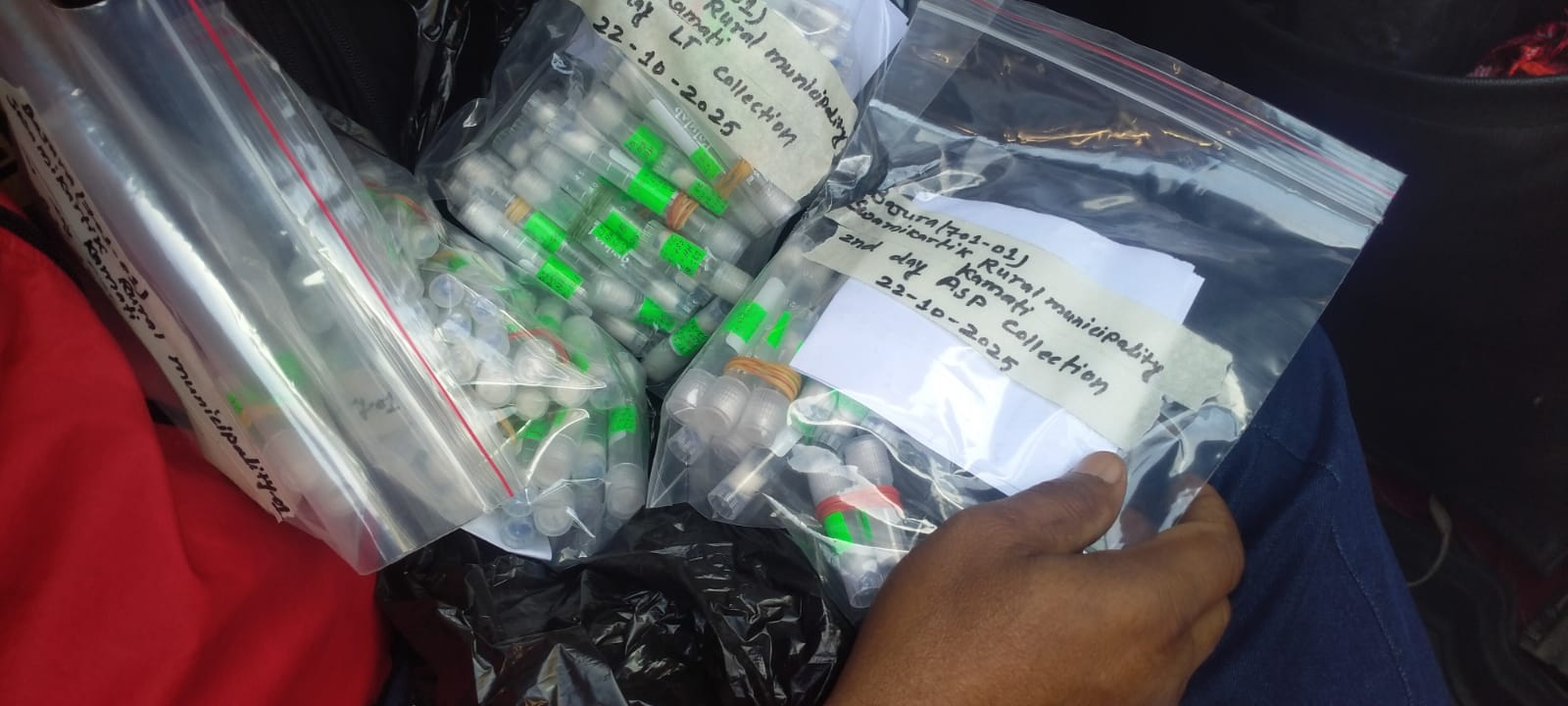
The tropical disease Kala-azar is expanding its altitude range, reaching the Himalayan region, a direct consequence of global warming and a changing climate system

BAJURA: Due to climate change and shifting weather patterns, the parasitic disease visceral leishmaniasis (VL), also known as kala-azar, which had been eradicated from the Terai and confined to the hills, is now reemerging in Nepal’s Hindu Kush Himalayan region.
A recent study conducted by health scientists at the BP Koirala Institute of Health Sciences (BPKIHS) Dharan on this disease, which is spread by the sandfly, has shown a pronounced presence of Kala-azar in the country’s hilly and Himalayan regions.
The failure to make this a subject of public awareness and public concern, along with the neglect in waste management, has led researchers to estimate that controlling this disease will take another decade, according to a statement given to Nepal News.
Due to the country’s population distribution, open border, and traditional relationship with India, Nepal is becoming the fourth affected party of this disease, which is considered endemic to South Asia.
The treatment for the advanced stage of Kala-azar, which appears to be a common fever, is only possible in a few recognized government institutions in the country. Therefore, there is a lack of access to its treatment.
Researchers at the institute, including Manish Karna, state that the situation appears alarming based on the latest study conducted over a continuous period of 24 months in four villages of Baitadi and Bajura in Sudurpashchim Province.
Even now, there are Kala-azar patients in the Tripura and Sera areas in the Dasharathchand Municipality of Baitadi, which is located one to three kilometers from the Indian border, and in the Himalayan villages of Kamti and Tiluchaur in Bajura, located 200 km away. Another researcher, Dhan Bahadur Urau, believes this is not a good situation. Finding five infected individuals just in the small geographical area of the Tripura region of Baitadi is not a good sign.
Urau states, “Considering the population distribution, the situation in the hilly and Himalayan regions across the country is similar, so this disease is active nationwide.”

Karna, Majhi and Urau from BPKIHS have been involved in the research for 24 months. Photo: Shyam Bhatta/Nepal News
Due to the open border with India, migrants also bring this disease into Nepal.
According to Bharat Pant, Information Officer at Baitadi District Hospital, 12 Kala-azar patients were found last year alone in four villages, including the district headquarters, located along the Indian border.
Symptoms of Kala-azar include getting a normal fever, being cured by taking paracetamol, and then getting a fever again. If a blood test is done early and free medication is given in the village, this disease does not cause much problem. However, for a complete check-up to confirm the disease, a bone marrow biopsy has to be performed, and its treatment is only possible in Dharan and Kathmandu.
Researcher Karna says, “Reaching the bone marrow test is the final stage, and the treatment thereafter is complex but free of cost.”
Researcher Kailash Kumar Majhi suggests that the community itself needs to become active to enforce awareness against Kala-azar, which has been deeply rooted in Nepali society for 30 years and is often mistaken for the common cold.
The sandfly, which causes Kala-azar in humans, is born due to common spilled waste, dusty surfaces, and uncleaned old houses or cowsheds. A fever that lasts for two weeks is also a symptom of Kala-azar. This disease is called “kala-azar” because of loss of appetite, persistent fever, and the body turning dark.
After Kala-azar was seen in the Terai in the 1990s, a control campaign was run from 1996 to 2015. As a result, it was eliminated in the Terai, but researchers are surprised that it has reappeared immediately in the hills and then in the Himalayas.

Sandfly samples caught in Bajura. Photo: Shyam Bhatta/Nepal News
This study, which is conducted based on the density of sandflies found in specific locations, also uses a machine and mask to collect them as samples.
Although the government, in collaboration with various international organizations, has run studies and control campaigns for Kala-azar, the disease has not been completely eradicated.
Bangladesh is considered the hotspot for Kala-azar. India is the second infected country for this disease, and Pakistan is the third. Nepal being the fourth is not a good sign. It is also not a happy sign for Nepal that a country with a large population like Sri Lanka is among the least infected countries compared to Nepal. Kala-azar, considered an endemic disease of South Asia, has not been identified in Europe, America, Australia, or Africa to date.
Before Baitadi and Bajura, the government had repeatedly attempted to study and control this disease in Humla, Surkhet, Doti, Achham, Kailali, and Palpa. Kala-azar, which badly affected Sarlahi, Mahottari, and Saptari in the 1990s, had spread throughout Nepal’s Terai.
Scientists report that due to climate change and shifting weather patterns, the disease has expanded from the Terai plains to the hills and now reached the Himalayan region. The study was conducted by BPKIHS in Dharan for the government, in collaboration with a Belgian INGO.